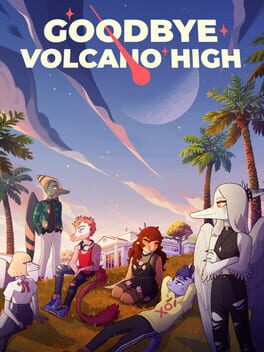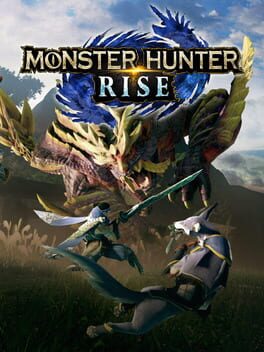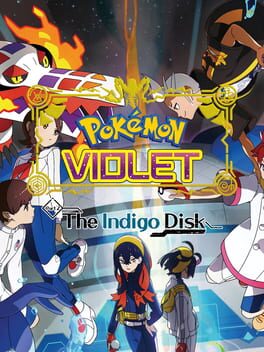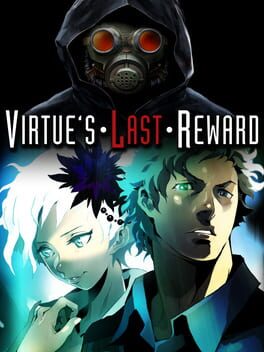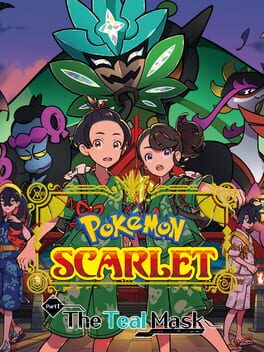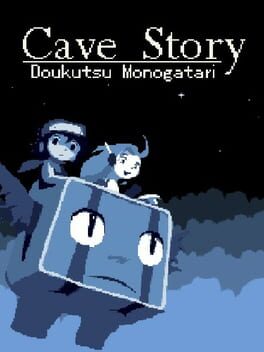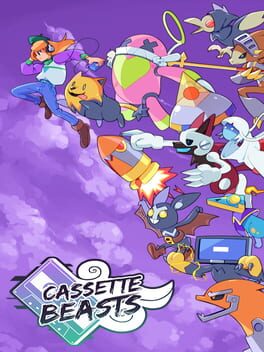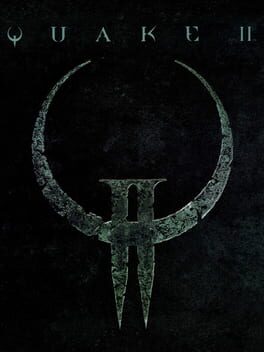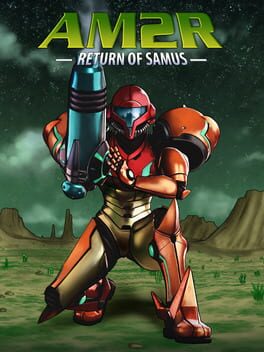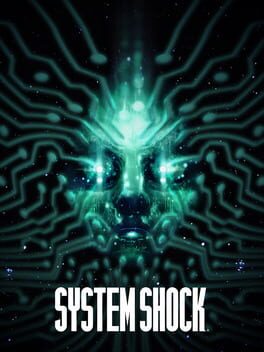RaffiTheOwl
2023
Goodbye Volcano High had me worried at first. It started slow with familiar, somewhat tropey high school drama. However, it picked up momentum and weight as it went. The final third of the game solidly brings it home, hitting with emotional resonance to our own pre-apocalypse in a way that everything else I've experienced would be too cowardly to not subvert. The shaky start and occasional misses were well worth the impact it left. 🌠
2021
Man, you can tell this is a legacy series that did one thing good back in the day (hunting monsters) and laser-focused on gradually refining that. The Fantasy Japan setting is nicely rendered but generic and about as shallow a cultural representation as the average Mexican restaurant in America. The narrative and characters are generally either nonexistent or faintly embarrassing. This sounds harsh, but they barely matter - they're set-dressing and setup for the monster hunting, and they have the good manners to move by quickly.
That aside, the monster hunting - it's intensely satisfying. The initial approach makes a good first impression with rewarding mechanics. Zipping around the environment as you scoop up and strike down the local wildlife is a functional amuse-bouche, building up anticipation and crystalizing the final preparations. Popping a web-slinging spider or a pheromone-puffing mink into your pocket might point you towards hijacking an extra monster to rodeo into your target, while grabbing status-inflicting exploding toads may instead tempt you to set up a trap.
The monster fights themselves are certainly worthy of being the series' singular focus. Each monster has a distinct character and a variety of attacks, with constant surprises as you hunt increasingly dangerous targets. A razor-tailed velociraptor, a colossal acrobatic crane, and a b-boy mega-monkey are some of the first targets, and they only get more extravagant. While the game is broadly forgiving if you're staying on curve with upgrading armor & weapons, analyzing a monster's attack patterns and exploiting their weaknesses is still exceptionally satisfying.
In between hunts, upgrading your equipment is often enough encouragement to go back into the fray to test out your new digs. It's not an XCOM-level "one more turn" effect by any means - upgrades tend to be more numerical rather than meaningfully changing the way you interact with fights - but given how strong the outfit & weapon visual design is, test runs are tempting.
After a hundred hunts, many of Rise's charms have already started to wear thin. The environments' unchanging nature means that exploration is decidedly finite, and collecting wildlife at the start of a hunt can turn into more of a chore than a treat. The limited ways monsters engage with their environment (typically milling about aimlessly, occasionally beefing with other monsters in the locale) similarly limits the variety - and impacts the monsters' credibility. (Most hunts start by telling you the target is a danger to civilization, not that you ever see that.) And the Rampage side-mode - a sort of Monster Hunter tower defense - is broadly unworthy of revisiting more than the game insists. But by this point, you've probably cleaved through nearly all of Rise's content. I wish there were more systems to encourage (or force) improvisation, but Rise shines bright enough for the majority of its time that it's hard to rag on it especially hard for an ending that fades away.
That aside, the monster hunting - it's intensely satisfying. The initial approach makes a good first impression with rewarding mechanics. Zipping around the environment as you scoop up and strike down the local wildlife is a functional amuse-bouche, building up anticipation and crystalizing the final preparations. Popping a web-slinging spider or a pheromone-puffing mink into your pocket might point you towards hijacking an extra monster to rodeo into your target, while grabbing status-inflicting exploding toads may instead tempt you to set up a trap.
The monster fights themselves are certainly worthy of being the series' singular focus. Each monster has a distinct character and a variety of attacks, with constant surprises as you hunt increasingly dangerous targets. A razor-tailed velociraptor, a colossal acrobatic crane, and a b-boy mega-monkey are some of the first targets, and they only get more extravagant. While the game is broadly forgiving if you're staying on curve with upgrading armor & weapons, analyzing a monster's attack patterns and exploiting their weaknesses is still exceptionally satisfying.
In between hunts, upgrading your equipment is often enough encouragement to go back into the fray to test out your new digs. It's not an XCOM-level "one more turn" effect by any means - upgrades tend to be more numerical rather than meaningfully changing the way you interact with fights - but given how strong the outfit & weapon visual design is, test runs are tempting.
After a hundred hunts, many of Rise's charms have already started to wear thin. The environments' unchanging nature means that exploration is decidedly finite, and collecting wildlife at the start of a hunt can turn into more of a chore than a treat. The limited ways monsters engage with their environment (typically milling about aimlessly, occasionally beefing with other monsters in the locale) similarly limits the variety - and impacts the monsters' credibility. (Most hunts start by telling you the target is a danger to civilization, not that you ever see that.) And the Rampage side-mode - a sort of Monster Hunter tower defense - is broadly unworthy of revisiting more than the game insists. But by this point, you've probably cleaved through nearly all of Rise's content. I wish there were more systems to encourage (or force) improvisation, but Rise shines bright enough for the majority of its time that it's hard to rag on it especially hard for an ending that fades away.
2014
It's hard to know how to evaluate Pokemon Omega Ruby. It is the eleventh game in the world's most profitable franchise. It is a 2014 remake of a 2002 game. And it is a turn-of-the-century environmental narrative in a time of massive environmental upheaval. Each provides a different view on the conservative approach taken to create Omega Ruby.
Omega Ruby the 11th Iteration
As a series that is constantly (yet conservatively) iterating on its formula, Omega Ruby makes valuable refinements broadly focused on saving the player time. The DexNav eases Pokedex completion, in addition to making typically rare/inaccessible egg moves & hidden abilities available. A lategame key item makes quickly traveling across Hoenn fast & easy (while also opening up a few extra locations). The Mega Evolution mechanic is also better paced than X & Y, with a constant drip feed of new Mega Evolutions made available instead of saving nearly all of them for the end.
It's a strong iteration that takes no big swings, though that's not surprising - X & Y introduced a lot of major series changes (including full 3D graphics and the Fairy type). ORAS seems focused on refinement instead of innovation, and through that lens, it succeeds.
Omega Ruby the Remake
Comparing Omega Ruby to the original GBA title, "refinement instead of innovation" seems broadly fitting as well, with a few exceptions. Having already discussed the series' systems that have evolved since the original release in 2002, the two big elements left to examine are the setting and characters.
Hoenn's settlements divide evenly into three categories. The first is imaginative & memorable: the sunken crater city Sootopolis, the treetop town Fortree, the floating raft-town Pacifidlog. The second is passably distinct: the beach town Dewford, the bustling seaside market city Slateport, the overwhelmingly tan-grey Rustboro. The third is entirely forgettable: Oldale, Petalburg, Verdanturf, and Fallarbor Town are all collections of the same 4-6 buildings, one of which may have a distinct purpose (e.g. a gym, a contest center) in a green forest clearing - except Fallarbor, which is brown. All of these are about as they were in the original games, save Mauville - what, in the first game, was cleanly in the third category, and has been upgraded to somewhere between the first and second, turning it from a no-frills central hub pit stop into a futuristic urban complex, a mega-mall on the first floor and dense housing on the second. It's a nice change (likely spurred equally by the city's hub location and the need to fit in an assortment of accumulated series features) that makes the forgettable locations left untouched a tad bit more disappointing.
More care and attention, however, was put into the title's lead characters. The antagonists received visual redesigns, the champion has been turned from an enigmatic hermit to a central plot-driver, and the rival has several more chances to interject their thoughts & feelings. The jump to 3D has given many more chances for body language and visual flair: gym leaders and other major opponents strike poses, twirl the camera, and shift their facial expressions, adding more color to characters who still only have a few lines of text. While Groudon, the sole character on the box art and title screen, still has little screen time, the system's 3D capabilities are used in full cinematic effect.
Omega Ruby the Narrative
At their release, Pokemon Ruby and Sapphire were the most story-intensive games in the series, and may still be the series' most politically relevant (though that remains a low bar to clear). Here, too, the remakes prioritize refinement over innovation - a predictably conservative yet nevertheless disappointing choice. A loose allegory for the Isahaya Bay project and its controversies was relevant in 2002. 12 years later, unlike ORAS's story, all the relevant issues have developed a lot.
By 2002, plans for the artificial Palm Jumeriah Dubai island had been announced. By 2014, residential homes and 28 hotels had been open. The island had been reportedly sinking, residents were complaining about the intense housing density, and water stagnation issues added more challenges. One of Omega Ruby's additions is the Battle Resort - a tropical island built to be "a paradise of Trainers: by Trainers and for Trainers." Its central feature is the Battle Maison Replica, a Parisian mansion for the Poke-elite. The real-world echoes of European island colonialism and, more aptly, tourism-centric terraforming projects, would be a salient point for the game's environmental themes, but all these ideas are predictably ignored. The Battle Maison is nothing more than a pretty endgame location, a vacation destination that exists outside of the narrative context as it exists outside of Hoenn's routes.
By 2002, the oceans were known to be warming, climate change was a scientific consensus, and some countries (notably not the US) began working to reduce greenhouse gas emissions. By 2014, climate change's pace was faster than expected, the Fukushima disaster buried hopes for nuclear power as a way forward, and natural disasters were getting worse due to climate change. 1 The original Ruby has Slateport's Oceanic Museum as a brief point of interest - an establishment with the tagline "The endless sea sustains all life." Omega Ruby's most relevant addition is Sea Mauville, a replacement of the abandoned ship from Ruby that resembles a ruined, partially-sunken oil rig. Sea Mauville was a research facility designed for extracting natural resources (and secretly researching harnessing "Pokemon bioenergy"). Once shuttered, it ended up accidentally functioning as an artificial reef, and it was turned into a nature preserve. It's an imaginative replacement, and a symbol of letting nature reclaim humanity's mechanisms of exploitation is not without value. It is, however, a very conservative gesture, remaining tight-lipped on the salient followup questions. How, when, by whom, and exactly why should the means of natural exploitation be turned into means of natural enrichment? Given the series' legacy, it would be absurd to expect the equivalent of "Pikachu Says Blow Up Oil Pipelines," but the addition stopping where it does feels so neutered that it ends up disappointingly unsubstantial.
In the dozen years between Ruby and its remake, climate change has turned from a "distant" threat to the status quo into a state of existential global decay - one that requires immediate, dramatic change of the status quo. The organizations dragging the environment out of balance are not outsider ecoterrorists like Team Magma or Team Aqua; they are the governments and corporations in power. Omega Ruby, however, does not acknowledge the way these issues have changed over time. The protagonist prevents the outsiders from seizing control nature, and in doing so preserves the status quo. Its centrism has curdled into conservatism, evocative of Reagan's neoliberal environmentalism: a "squandered opportunity" that neither steers hard towards nor away from the environmental issues it approaches.
Omega Ruby the 11th Iteration
As a series that is constantly (yet conservatively) iterating on its formula, Omega Ruby makes valuable refinements broadly focused on saving the player time. The DexNav eases Pokedex completion, in addition to making typically rare/inaccessible egg moves & hidden abilities available. A lategame key item makes quickly traveling across Hoenn fast & easy (while also opening up a few extra locations). The Mega Evolution mechanic is also better paced than X & Y, with a constant drip feed of new Mega Evolutions made available instead of saving nearly all of them for the end.
It's a strong iteration that takes no big swings, though that's not surprising - X & Y introduced a lot of major series changes (including full 3D graphics and the Fairy type). ORAS seems focused on refinement instead of innovation, and through that lens, it succeeds.
Omega Ruby the Remake
Comparing Omega Ruby to the original GBA title, "refinement instead of innovation" seems broadly fitting as well, with a few exceptions. Having already discussed the series' systems that have evolved since the original release in 2002, the two big elements left to examine are the setting and characters.
Hoenn's settlements divide evenly into three categories. The first is imaginative & memorable: the sunken crater city Sootopolis, the treetop town Fortree, the floating raft-town Pacifidlog. The second is passably distinct: the beach town Dewford, the bustling seaside market city Slateport, the overwhelmingly tan-grey Rustboro. The third is entirely forgettable: Oldale, Petalburg, Verdanturf, and Fallarbor Town are all collections of the same 4-6 buildings, one of which may have a distinct purpose (e.g. a gym, a contest center) in a green forest clearing - except Fallarbor, which is brown. All of these are about as they were in the original games, save Mauville - what, in the first game, was cleanly in the third category, and has been upgraded to somewhere between the first and second, turning it from a no-frills central hub pit stop into a futuristic urban complex, a mega-mall on the first floor and dense housing on the second. It's a nice change (likely spurred equally by the city's hub location and the need to fit in an assortment of accumulated series features) that makes the forgettable locations left untouched a tad bit more disappointing.
More care and attention, however, was put into the title's lead characters. The antagonists received visual redesigns, the champion has been turned from an enigmatic hermit to a central plot-driver, and the rival has several more chances to interject their thoughts & feelings. The jump to 3D has given many more chances for body language and visual flair: gym leaders and other major opponents strike poses, twirl the camera, and shift their facial expressions, adding more color to characters who still only have a few lines of text. While Groudon, the sole character on the box art and title screen, still has little screen time, the system's 3D capabilities are used in full cinematic effect.
Omega Ruby the Narrative
At their release, Pokemon Ruby and Sapphire were the most story-intensive games in the series, and may still be the series' most politically relevant (though that remains a low bar to clear). Here, too, the remakes prioritize refinement over innovation - a predictably conservative yet nevertheless disappointing choice. A loose allegory for the Isahaya Bay project and its controversies was relevant in 2002. 12 years later, unlike ORAS's story, all the relevant issues have developed a lot.
By 2002, plans for the artificial Palm Jumeriah Dubai island had been announced. By 2014, residential homes and 28 hotels had been open. The island had been reportedly sinking, residents were complaining about the intense housing density, and water stagnation issues added more challenges. One of Omega Ruby's additions is the Battle Resort - a tropical island built to be "a paradise of Trainers: by Trainers and for Trainers." Its central feature is the Battle Maison Replica, a Parisian mansion for the Poke-elite. The real-world echoes of European island colonialism and, more aptly, tourism-centric terraforming projects, would be a salient point for the game's environmental themes, but all these ideas are predictably ignored. The Battle Maison is nothing more than a pretty endgame location, a vacation destination that exists outside of the narrative context as it exists outside of Hoenn's routes.
By 2002, the oceans were known to be warming, climate change was a scientific consensus, and some countries (notably not the US) began working to reduce greenhouse gas emissions. By 2014, climate change's pace was faster than expected, the Fukushima disaster buried hopes for nuclear power as a way forward, and natural disasters were getting worse due to climate change. 1 The original Ruby has Slateport's Oceanic Museum as a brief point of interest - an establishment with the tagline "The endless sea sustains all life." Omega Ruby's most relevant addition is Sea Mauville, a replacement of the abandoned ship from Ruby that resembles a ruined, partially-sunken oil rig. Sea Mauville was a research facility designed for extracting natural resources (and secretly researching harnessing "Pokemon bioenergy"). Once shuttered, it ended up accidentally functioning as an artificial reef, and it was turned into a nature preserve. It's an imaginative replacement, and a symbol of letting nature reclaim humanity's mechanisms of exploitation is not without value. It is, however, a very conservative gesture, remaining tight-lipped on the salient followup questions. How, when, by whom, and exactly why should the means of natural exploitation be turned into means of natural enrichment? Given the series' legacy, it would be absurd to expect the equivalent of "Pikachu Says Blow Up Oil Pipelines," but the addition stopping where it does feels so neutered that it ends up disappointingly unsubstantial.
In the dozen years between Ruby and its remake, climate change has turned from a "distant" threat to the status quo into a state of existential global decay - one that requires immediate, dramatic change of the status quo. The organizations dragging the environment out of balance are not outsider ecoterrorists like Team Magma or Team Aqua; they are the governments and corporations in power. Omega Ruby, however, does not acknowledge the way these issues have changed over time. The protagonist prevents the outsiders from seizing control nature, and in doing so preserves the status quo. Its centrism has curdled into conservatism, evocative of Reagan's neoliberal environmentalism: a "squandered opportunity" that neither steers hard towards nor away from the environmental issues it approaches.
The Indigo Disk is a notable improvement from the previous DLC, The Teal Mask. Its challenges are significantly more engaging, in large part due to its focus on doubles combat. (Its Elite Four also each have their own challenges, which add extra low-challenge variety.) Its environment is significantly more interesting, combining a four-biome terrarium with a new school. And its characters, while neither deep nor terribly engaging, are more fun and imaginative. The Indigo Disk justified its time and enriched Scarlet & Violet, which is not especially high praise but is more than The Teal Mask offered.
A dense knot of mysteries providing a steady feed of intrigue as it unfurls, using a cycle of speculation and strong twists.
Its narrative puzzles are its greatest strength. The lock-and-key structure keeps the overall story beats paced well, giving the player space to hypothesize before catching the curveball. The puzzles range in difficulty, but broadly keep a consistent quality. Philosophically, it brings little to the table, and its emotional core is thin. That being said, it's hard to care when getting to the bottom of what's really happening is so engaging.
The presentation is strong, with excellent voice acting & music scoring every scene. The character visual design is notably up and down, with a few standouts, several middling, and two scantily-clad women that the game's protagonist makes an uncomfortable number of horny comments about (even if it seems like the reader should find most of them gross). The UI is also makes navigating the game's convoluted plot fairly seamless, though it could have offered more in remembering how each decision branch differs.
The ending's deluge of twists and exposition is harder to digest (both in its quantity and some of the suspension of disbelief it asks), but it by no means ends with a whimper. Fantastic game, though be sure to play the previous entry first.
[Played via the Nonary Games remaster/port]
Its narrative puzzles are its greatest strength. The lock-and-key structure keeps the overall story beats paced well, giving the player space to hypothesize before catching the curveball. The puzzles range in difficulty, but broadly keep a consistent quality. Philosophically, it brings little to the table, and its emotional core is thin. That being said, it's hard to care when getting to the bottom of what's really happening is so engaging.
The presentation is strong, with excellent voice acting & music scoring every scene. The character visual design is notably up and down, with a few standouts, several middling, and two scantily-clad women that the game's protagonist makes an uncomfortable number of horny comments about (even if it seems like the reader should find most of them gross). The UI is also makes navigating the game's convoluted plot fairly seamless, though it could have offered more in remembering how each decision branch differs.
The ending's deluge of twists and exposition is harder to digest (both in its quantity and some of the suspension of disbelief it asks), but it by no means ends with a whimper. Fantastic game, though be sure to play the previous entry first.
[Played via the Nonary Games remaster/port]
A largely unmemorable side-story is kept afloat by an incredibly cute mascot central to the narrative. Largely more of the same from base Scarlet/Violet:
- Large swathes of unremarkable land
- Broad narrative ideas that are batting above series average but still below par for the medium as a whole
- Good music with one or two genuinely great tracks
- Challenges & dialogue writing that are sure to remind you this series is targeted at children
- Very charming designs for the new 'mons
It's disappointing it ended with a whimper and "to be continued" featuring a character turn so deeply steeped in shonen trope stereotypes. I don't regret my time with it, partially because a few moments demonstrated some care & thought (the Bloodmoon Beast side-arc, I guess?), and mostly because I played it on The Neon Caster's channel. That being said, I don't know if I can honestly say it added anything to my life. Still tepidly excited for the next expansion, whose focus on competitive play & the doubles format might be more up my alley.
- Large swathes of unremarkable land
- Broad narrative ideas that are batting above series average but still below par for the medium as a whole
- Good music with one or two genuinely great tracks
- Challenges & dialogue writing that are sure to remind you this series is targeted at children
- Very charming designs for the new 'mons
It's disappointing it ended with a whimper and "to be continued" featuring a character turn so deeply steeped in shonen trope stereotypes. I don't regret my time with it, partially because a few moments demonstrated some care & thought (the Bloodmoon Beast side-arc, I guess?), and mostly because I played it on The Neon Caster's channel. That being said, I don't know if I can honestly say it added anything to my life. Still tepidly excited for the next expansion, whose focus on competitive play & the doubles format might be more up my alley.
2023
Pseudoregalia is mechanically "metroidvania via Super Mario 64," aesthetically "retro ominous medieval-abstractia via N64 Zelda nostalgia," and philosophically "problem-solving via toolkit experimentation."
Pseudoregalia is broadly uninterested in its player feeling hand-held. Light and colorful scene decorations are sometimes used to guide the player's eyes, and movement upgrades will offer advice for the finer points of their usage, but that's about it. This game's world feels large and sprawling, and it neither cares to give you a map nor to force your hand as to how you progress. Many Metroidvanias are deceptively linear, with little ability to deviate from the intended progression path. Pseudoregalia, on the other hand, invites deviation so thoroughly that I'm unsure if it even has a singular intended progression path. So many of its movement abilities can combine in unexpected and unexplained ways that it borderline feels more like an exploit than by design. I can imagine that could sound off-putting to some, but for me? Delightful. Pseudoregalia is a treat for those who enjoy the clever rebellious satisfaction that sequence breaking can bring.
This does lead to the game's pacing feeling a bit lopsided - after a couple hours of play feeling like I was knee-deep in exploration, it suddenly became clear that I was almost at the end and, half an hour later, it was over. The narrative & combat also feel very thin, the former with especially little to offer. What Pseudoregalia does well is good, and everything else is barely existent. I'm looking forward to what's next from the developer - I hope the game's success enables them to put a bit more time into presentation & polish. (A lack of key rebinding would have been especially annoying if I didn't already have an AutoHotKey script ready.)
Pseudoregalia is broadly uninterested in its player feeling hand-held. Light and colorful scene decorations are sometimes used to guide the player's eyes, and movement upgrades will offer advice for the finer points of their usage, but that's about it. This game's world feels large and sprawling, and it neither cares to give you a map nor to force your hand as to how you progress. Many Metroidvanias are deceptively linear, with little ability to deviate from the intended progression path. Pseudoregalia, on the other hand, invites deviation so thoroughly that I'm unsure if it even has a singular intended progression path. So many of its movement abilities can combine in unexpected and unexplained ways that it borderline feels more like an exploit than by design. I can imagine that could sound off-putting to some, but for me? Delightful. Pseudoregalia is a treat for those who enjoy the clever rebellious satisfaction that sequence breaking can bring.
This does lead to the game's pacing feeling a bit lopsided - after a couple hours of play feeling like I was knee-deep in exploration, it suddenly became clear that I was almost at the end and, half an hour later, it was over. The narrative & combat also feel very thin, the former with especially little to offer. What Pseudoregalia does well is good, and everything else is barely existent. I'm looking forward to what's next from the developer - I hope the game's success enables them to put a bit more time into presentation & polish. (A lack of key rebinding would have been especially annoying if I didn't already have an AutoHotKey script ready.)
2004
Deeply influential works often age poorly as others iterate, subvert, and popularize their ideas. Thankfully, Cave Story has not suffered from its success, hardly aging a day two decades later. It's a tight, satisfying experience bursting with personality, charm, and care. Those willing to put in the extra time and effort to pursue the best ending will be well rewarded, both with the extra narrative layers the ending reveals & the subtle ways the game shifts along the way.
2023
(I played this fully on stream - watch the VODs on The Neon Caster's channel!)
A few days ago, I had the misfortune of finding the review page for Pokemon Clover. It's a testament to how low the bar is for Pokemon-likes - throw some extra QOL features at genre fans and see how many can overlook trivialities like "virulent, aggressive racism." Stick to the formula, improve a few classic pain points, and throw a book of new Content at the player, and you can hit nearly the same score as this game! Why try, right?
Thankfully, a few things establish Cassette Beasts as trying harder:
1:It takes inspiration from multiple sources
"Cassette" is half of the title for a reason; this game is significantly inspired by the aesthetics of the '70s-'90s and its music. Explore an abandoned mall, heal your beasts by rewinding the tape, walk through a drizzle of song references that (narrowly) avoid feeling overbearing - what it takes is neither subtle nor terribly deep, but it still establishes its own identity.
2: Diverging from series conventions
Some monster taming games sell themselves in part on designing away controversial series design choices - see Temtem's zero-luck gameplay - but Cassette Beasts is more expansive with what parts of the formula it reimagines. Type effectiveness exists - except instead of simply affecting damage, they create different status conditions (of which there are roughly a couple dozen). Beasts can know up to 8 moves at once, each of which costs a different amount of action points. "Shiny" equivalents have random typings, which also affects their learnset. There are some tactics that ride the fine line between "extremely effective" and "utterly broken," and honestly, that's fun! Figuring out how to synergize things to create some truly nutty combos felt really satisfying, and considering how late into the game they opened up (and how imperfect they could be), it never felt tedious.
3:It has things it cares about & wants to convey
This was my biggest relief playing Cassette Beasts - it was created for a reason beyond "the devs wanted to make a Pokemon-ish game." Capitalism sucks! The worst of us deserve a chance at redemption! The human will can be stronger than historical intertia!
...Weren't blown away by any of these? Neither was I - the writing isn't bad, but Disco Elysium this ain't. Like earlier, it's neither terribly subtle nor deep. I'm just glad it's in conversation with ideas beyond its genre contemporaries.
Other elements are fine without blowing me away - the human characters, beast design, and music are all passable to good, with a few of each standing out. It has some fun surprises in store, and its pacing respects the players' time while still providing plenty of side content for those interested in wandering. Now that it's done, Cassette Beasts didn't give me a lot to chew on, but it's left a nice taste lingering in my mouth.
A few days ago, I had the misfortune of finding the review page for Pokemon Clover. It's a testament to how low the bar is for Pokemon-likes - throw some extra QOL features at genre fans and see how many can overlook trivialities like "virulent, aggressive racism." Stick to the formula, improve a few classic pain points, and throw a book of new Content at the player, and you can hit nearly the same score as this game! Why try, right?
Thankfully, a few things establish Cassette Beasts as trying harder:
1:It takes inspiration from multiple sources
"Cassette" is half of the title for a reason; this game is significantly inspired by the aesthetics of the '70s-'90s and its music. Explore an abandoned mall, heal your beasts by rewinding the tape, walk through a drizzle of song references that (narrowly) avoid feeling overbearing - what it takes is neither subtle nor terribly deep, but it still establishes its own identity.
2: Diverging from series conventions
Some monster taming games sell themselves in part on designing away controversial series design choices - see Temtem's zero-luck gameplay - but Cassette Beasts is more expansive with what parts of the formula it reimagines. Type effectiveness exists - except instead of simply affecting damage, they create different status conditions (of which there are roughly a couple dozen). Beasts can know up to 8 moves at once, each of which costs a different amount of action points. "Shiny" equivalents have random typings, which also affects their learnset. There are some tactics that ride the fine line between "extremely effective" and "utterly broken," and honestly, that's fun! Figuring out how to synergize things to create some truly nutty combos felt really satisfying, and considering how late into the game they opened up (and how imperfect they could be), it never felt tedious.
3:It has things it cares about & wants to convey
This was my biggest relief playing Cassette Beasts - it was created for a reason beyond "the devs wanted to make a Pokemon-ish game." Capitalism sucks! The worst of us deserve a chance at redemption! The human will can be stronger than historical intertia!
...Weren't blown away by any of these? Neither was I - the writing isn't bad, but Disco Elysium this ain't. Like earlier, it's neither terribly subtle nor deep. I'm just glad it's in conversation with ideas beyond its genre contemporaries.
Other elements are fine without blowing me away - the human characters, beast design, and music are all passable to good, with a few of each standing out. It has some fun surprises in store, and its pacing respects the players' time while still providing plenty of side content for those interested in wandering. Now that it's done, Cassette Beasts didn't give me a lot to chew on, but it's left a nice taste lingering in my mouth.
2023
AM2R is clearly a product of love for the series. It understands a lot of what makes great Metroids tick, and does such a good job that it stands among its official series entries with ease.
If SM stands out for its atmosphere, Fusion for its narrative, and Dread for its boss fights, AM2R stands out for its surprises. Some of those are meant to hit for dedicated series fans; obscure callbacks and specific allusions really tickle the mind and work to create new connections (that it can then surprisingly subvert). Many of them are just jaw-dropping "oh shit!" moments that pull the rug out from under you to put you in mix of delight and panic. I'd first played this game around its release, and I still found myself remembering many of this game's coolest inclusions simply because of how memorable they are.
It's not without fault - mainly, some of the fights against the later Metroid forms can be an absolute slog. Narrative elements are also pretty sparse, and the atmosphere is serviceable without being especially engrossing or memorable. But those qualms are holding it up to the standards of mainline series entries - something that AM2R thoroughly earns.
If SM stands out for its atmosphere, Fusion for its narrative, and Dread for its boss fights, AM2R stands out for its surprises. Some of those are meant to hit for dedicated series fans; obscure callbacks and specific allusions really tickle the mind and work to create new connections (that it can then surprisingly subvert). Many of them are just jaw-dropping "oh shit!" moments that pull the rug out from under you to put you in mix of delight and panic. I'd first played this game around its release, and I still found myself remembering many of this game's coolest inclusions simply because of how memorable they are.
It's not without fault - mainly, some of the fights against the later Metroid forms can be an absolute slog. Narrative elements are also pretty sparse, and the atmosphere is serviceable without being especially engrossing or memorable. But those qualms are holding it up to the standards of mainline series entries - something that AM2R thoroughly earns.
2023
A game with some neat ideas (Mario Maker as a high-lethality grapple-hooking FPS) that chokes on a lot of games-as-a-service trappings. The resource management & XP system by themselves would feel somewhat justifiable as a way to drip-feed content and prevent players from getting overwhelmed by options, but the weekly challenges & season ranks just make it clear they're trying to skinner box you into playing for 1-3 hours every single day. When I feel that start to get in the way of how I'd normally interact with something, I just have to uninstall. I'll keep my eye on its updates to see how it changes, but honestly I don't expect it to get interesting enough to really justify dropping a lot of time into it & struggling to ignore how badly it wants this game to be a daily commitment.
2023
System Shock's 2023 remake felt like an insight into what people valued about the original, why it left a mark, and how far the imsim (immersive simulation) genre has come.
Citadel Station is big, bright, and labyrinthine. Seemingly every wall and ceiling covered in glowing screens and lights, making readability (what can I actually interact with? what am I supposed to do in this room?) hard to parse for the first several hours of play. The station's layout intensifies this sense of disorientation. Each floor of the space station is sizable and sprawling, with twisting, intersecting, and hidden rooms making navigation as much of a mental exercise as the game's basic "redirect the flow" puzzles. This sense of disorientation feels thematically apt, but it has costs: prodding at every surface and/or overlooking critical buttons & switches is frustrating, and the puzzling architecture eschews any sense of verisimilitude. (The game pokes fun at itself with a one-off audio log about how SHODAN intentionally designed the station to be maze-like, which, haw haw, but remains a barrier to immersion.)
The means of interacting with the environment are also generally primitive: run, jump, shoot, and press buttons. While the game does find some simple but effective ways to iterate on those, I couldn't help but think about the ways Arkane's imsims have pushed environmental interactions forward (Dishonored's blink & rat possession! Prey's foam crossbow & mimic matter! Metroid Prime's scan visor & morph ba- wait a second).
Narratively, the game feels a bit thin. After a tightly-paced opening, nearly all of the written content that follows is audio logs of the crew at various points of suffering and SHODAN's taunts. It still hits some good narrative beats, but anyone hoping for thoughtful insight into Shodan's motivations or, frankly, any well-developed cast members (arguably beyond Shodan) will be disappointed.
Speaking of Shodan - while her taunts and traps were fun, it felt a little flaccid due to the reanimation mechanic. (Basically, you can unlock fixed respawn points that will allow you to die & return without losing any items or progress otherwise.) When her most devious trap turns a game over into a slap on the wrist, it starts to feel like she's all bark and no bite. (Segments without these respawn points are a bit more engaging.) Were other consequences for taking the respawn - additional enemies encroaching into new places, traps set for your return - deciding between taking the respawn or reloading a save would be fun! But as it stands, it felt like an odd and underdeveloped choice. (There is a difficulty option that addresses this by putting a hard 10-hour cap on gameplay. It's an interesting option, but it seems ill-fit for a first playthrough - mine took me 18ish hours.)
Other bits are similarly impressive by 1994's standards but undercooked or unremarkable today. Combat is fine - some of the weapons are especially satisfying to use, but enemy AI is disappointingly limited. Cyberspace segments play like baby's first Descent & could be shortened or cut. The soundtrack is extremely functional cyberpunky techno that left little impression.
As a fan of imsims, I enjoyed the look into the genre's history through the murky lens of a faithful-seeming remaster. I wouldn't recommend it to those interested in trying out immersive sims - honestly, just play Prey (2016).
Citadel Station is big, bright, and labyrinthine. Seemingly every wall and ceiling covered in glowing screens and lights, making readability (what can I actually interact with? what am I supposed to do in this room?) hard to parse for the first several hours of play. The station's layout intensifies this sense of disorientation. Each floor of the space station is sizable and sprawling, with twisting, intersecting, and hidden rooms making navigation as much of a mental exercise as the game's basic "redirect the flow" puzzles. This sense of disorientation feels thematically apt, but it has costs: prodding at every surface and/or overlooking critical buttons & switches is frustrating, and the puzzling architecture eschews any sense of verisimilitude. (The game pokes fun at itself with a one-off audio log about how SHODAN intentionally designed the station to be maze-like, which, haw haw, but remains a barrier to immersion.)
The means of interacting with the environment are also generally primitive: run, jump, shoot, and press buttons. While the game does find some simple but effective ways to iterate on those, I couldn't help but think about the ways Arkane's imsims have pushed environmental interactions forward (Dishonored's blink & rat possession! Prey's foam crossbow & mimic matter! Metroid Prime's scan visor & morph ba- wait a second).
Narratively, the game feels a bit thin. After a tightly-paced opening, nearly all of the written content that follows is audio logs of the crew at various points of suffering and SHODAN's taunts. It still hits some good narrative beats, but anyone hoping for thoughtful insight into Shodan's motivations or, frankly, any well-developed cast members (arguably beyond Shodan) will be disappointed.
Speaking of Shodan - while her taunts and traps were fun, it felt a little flaccid due to the reanimation mechanic. (Basically, you can unlock fixed respawn points that will allow you to die & return without losing any items or progress otherwise.) When her most devious trap turns a game over into a slap on the wrist, it starts to feel like she's all bark and no bite. (Segments without these respawn points are a bit more engaging.) Were other consequences for taking the respawn - additional enemies encroaching into new places, traps set for your return - deciding between taking the respawn or reloading a save would be fun! But as it stands, it felt like an odd and underdeveloped choice. (There is a difficulty option that addresses this by putting a hard 10-hour cap on gameplay. It's an interesting option, but it seems ill-fit for a first playthrough - mine took me 18ish hours.)
Other bits are similarly impressive by 1994's standards but undercooked or unremarkable today. Combat is fine - some of the weapons are especially satisfying to use, but enemy AI is disappointingly limited. Cyberspace segments play like baby's first Descent & could be shortened or cut. The soundtrack is extremely functional cyberpunky techno that left little impression.
As a fan of imsims, I enjoyed the look into the genre's history through the murky lens of a faithful-seeming remaster. I wouldn't recommend it to those interested in trying out immersive sims - honestly, just play Prey (2016).
2011
One of the most egregious examples I've seen of good ideas stretched out far beyond their viability. Fully completing this game takes about 10 hours (16+ if you're voice acting the game with friends), and its charm and intrigue fade far before you'll see any "true ending" that resolves overarching plotlines. This game needed drastic cuts - if it were a third of its length, it would have been a solid 7/10. But its problems extend beyond feeling like chewing on the same piece of gum for too long.
Its characters are a mix of one-note archetypes ("the snooty rich one," "the shy childhood friend") and One Joke ("the narcoleptic teacher," "the lolrandom one [athletic]," "the lolrandom one [anime]"). A few of them receive some development (contained either to their character-specific ending or the "true ending" arc) and most of which receive eleventh-hour Emotional Dramatic Twists™. It would be easier to gloss over the weak parts if they didn't stick around for so long, but many of them weren't stellar material to begin with. A couple character arcs manage to earn a drop of genuine pathos, but more try their hardest and come off as unearned and incongruous.
The central plot is similarly thin & disappointing. I had hoped that, after so much drudgery in completing all the other endings, it would redeem the game, or at least end on a strong note. Unfortunately, everything teased in bits & pieces is resolved in a final arc with a hodgepodge of revelations, ranging from "huh that's kind of interesting" to "that's it?"
There's little else to praise the game for. Aside from the fun human drawings of the cast, the art is almost entirely just stock art. Many dramatic moments fall flat because of a lack of visuals, and the prose does not step up to the plate to compensate. The soundtrack, similarly, is all free-to-use music that can't shake feeling cheap. Typos, issues loading saves, and a poorly-implemented text skip feature don't help either. Hatoful Boyfriend was ultimately a disappointment - not just because of what it did wrong, but because of how thoroughly its good ideas were mired in mediocrity.
Its characters are a mix of one-note archetypes ("the snooty rich one," "the shy childhood friend") and One Joke ("the narcoleptic teacher," "the lolrandom one [athletic]," "the lolrandom one [anime]"). A few of them receive some development (contained either to their character-specific ending or the "true ending" arc) and most of which receive eleventh-hour Emotional Dramatic Twists™. It would be easier to gloss over the weak parts if they didn't stick around for so long, but many of them weren't stellar material to begin with. A couple character arcs manage to earn a drop of genuine pathos, but more try their hardest and come off as unearned and incongruous.
The central plot is similarly thin & disappointing. I had hoped that, after so much drudgery in completing all the other endings, it would redeem the game, or at least end on a strong note. Unfortunately, everything teased in bits & pieces is resolved in a final arc with a hodgepodge of revelations, ranging from "huh that's kind of interesting" to "that's it?"
There's little else to praise the game for. Aside from the fun human drawings of the cast, the art is almost entirely just stock art. Many dramatic moments fall flat because of a lack of visuals, and the prose does not step up to the plate to compensate. The soundtrack, similarly, is all free-to-use music that can't shake feeling cheap. Typos, issues loading saves, and a poorly-implemented text skip feature don't help either. Hatoful Boyfriend was ultimately a disappointment - not just because of what it did wrong, but because of how thoroughly its good ideas were mired in mediocrity.
I've been going between 3.5 and 4 stars for this. PMD: EoS is an interesting game that struggles with pacing. Its narrative can feel sluggish, as its attempts to explain itself to a (very) young target audience can make dialogue repetitive, especially with its reliance on flashbacks to very recent events. At the same time, many of its most interesting & effective emotional beats (mainly its eleventh-hour dramatic reveal it) feel like they would have benefited from being introduced earlier and given more time to stew & develop.
Its pacing issues also extend to its mechanics, with filler missions padding out playtime (and almost entirely constituting the postgame). Again, some of its interesting mechanics are held back later than seem necessary, such as the SOS Mail (a fantastic concept that allows players to "rescue" each other from wiping in some dungeons) and evolution, which is incomprehensibly withheld entirely until the post-game and only fully usable on the main two characters after the postgame.
That being said, there's a lot to appreciate with EoS. It leans into its randomness effectively, with mechanics adapted from the mainline Pokemon series that can effectively create surprising emergent scenarios. (Those surprises range from humorous to infuriating, but the main game is broadly gentle enough to make the worst "That's bullshit!" moments fleeting.) There's a lot of care & charm in rare little things a player may never see. The plot, while often simple, has a lot of effective characterization & charm to it, and it delivers a surprisingly strong emotional blow at its end. The spritework is fantastic, and the music is as energetic and fun as the game's visuals.
At its best, it's very hard to put down, mixing a nearly-Firaxis level of "one more turn" syndrome with delightful charm and a spark of wonder. At its worst, it's shallow in ways that hurt because of how much potential it displays. Ultimately, it's a game that I expect will feel cozy & nostalgic for fans of Pokemon & kid lit, and may be middling for those who don't care about either.
Its pacing issues also extend to its mechanics, with filler missions padding out playtime (and almost entirely constituting the postgame). Again, some of its interesting mechanics are held back later than seem necessary, such as the SOS Mail (a fantastic concept that allows players to "rescue" each other from wiping in some dungeons) and evolution, which is incomprehensibly withheld entirely until the post-game and only fully usable on the main two characters after the postgame.
That being said, there's a lot to appreciate with EoS. It leans into its randomness effectively, with mechanics adapted from the mainline Pokemon series that can effectively create surprising emergent scenarios. (Those surprises range from humorous to infuriating, but the main game is broadly gentle enough to make the worst "That's bullshit!" moments fleeting.) There's a lot of care & charm in rare little things a player may never see. The plot, while often simple, has a lot of effective characterization & charm to it, and it delivers a surprisingly strong emotional blow at its end. The spritework is fantastic, and the music is as energetic and fun as the game's visuals.
At its best, it's very hard to put down, mixing a nearly-Firaxis level of "one more turn" syndrome with delightful charm and a spark of wonder. At its worst, it's shallow in ways that hurt because of how much potential it displays. Ultimately, it's a game that I expect will feel cozy & nostalgic for fans of Pokemon & kid lit, and may be middling for those who don't care about either.
